-
 Bitcoin
Bitcoin $116400
-0.36% -
 Ethereum
Ethereum $4033
3.40% -
 XRP
XRP $3.302
-1.26% -
 Tether USDt
Tether USDt $1.000
-0.02% -
 BNB
BNB $796.1
1.67% -
 Solana
Solana $177.8
1.89% -
 USDC
USDC $0.9999
0.00% -
 Dogecoin
Dogecoin $0.2314
4.09% -
 TRON
TRON $0.3381
0.14% -
 Cardano
Cardano $0.7989
1.22% -
 Stellar
Stellar $0.4496
-1.84% -
 Chainlink
Chainlink $20.42
9.42% -
 Hyperliquid
Hyperliquid $41.17
0.88% -
 Sui
Sui $3.914
3.77% -
 Bitcoin Cash
Bitcoin Cash $584.7
1.52% -
 Hedera
Hedera $0.2632
-0.54% -
 Avalanche
Avalanche $24.09
3.40% -
 Ethena USDe
Ethena USDe $1.001
-0.02% -
 Litecoin
Litecoin $123.2
1.33% -
 Toncoin
Toncoin $3.318
-0.04% -
 UNUS SED LEO
UNUS SED LEO $8.984
-0.05% -
 Shiba Inu
Shiba Inu $0.00001323
2.85% -
 Uniswap
Uniswap $10.90
4.41% -
 Polkadot
Polkadot $3.999
3.34% -
 Dai
Dai $1.000
0.01% -
 Cronos
Cronos $0.1630
9.64% -
 Bitget Token
Bitget Token $4.484
0.82% -
 Monero
Monero $272.4
2.44% -
 Pepe
Pepe $0.00001173
6.03% -
 Aave
Aave $290.8
2.88%
How does the blockchain technology of EOS coins work?
EOS utilizes a Delegated Proof-of-Stake consensus mechanism, where token holders elect block producers responsible for validating transactions and managing the blockchain.
Feb 25, 2025 at 11:13 pm
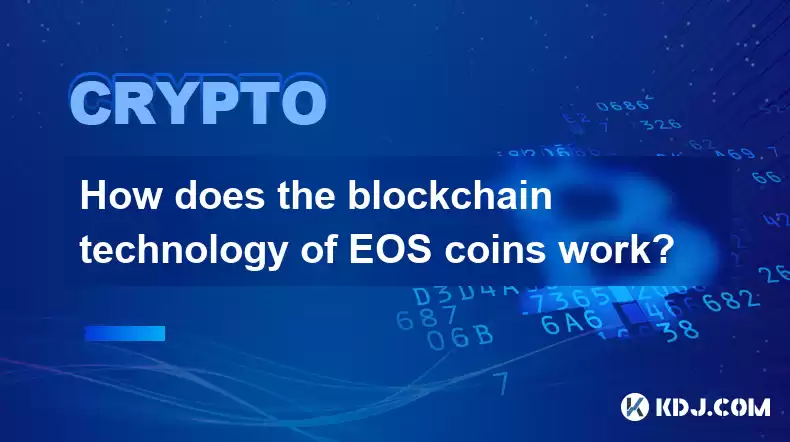
Key Points
- EOS is a blockchain platform that provides a high-throughput and scalable solution for decentralized applications.
- EOS uses a delegated proof-of-stake (DPoS) consensus mechanism to elect block producers and maintain the blockchain.
- EOSIO, the open-source software that powers EOS, offers a range of developer tools and features to facilitate the creation of decentralized applications.
- The EOS blockchain can process up to 4,000 transactions per second, making it suitable for high-volume applications and avoiding potential bottlenecks.
- EOS employs a smart contract system that enables the creation of complex and autonomous applications, which can be utilized to automate processes and reduce the need for intermediaries.
How Does EOS Blockchain Technology Work?
1. Delegated Proof-of-Stake (DPoS) Consensus Mechanism
EOS employs a DPoS consensus mechanism, which is a variation of the proof-of-stake (PoS) mechanism. In DPoS, token holders elect a set of block producers responsible for validating transactions and maintaining the blockchain.
2. Block Producers Election
EOS token holders can vote for up to 30 block producers based on their reputation, performance, and contributions to the network. Block producers are entities or individuals who run the software and hardware necessary to maintain the blockchain and process transactions.
3. Block Production and Validation
The elected block producers take turns creating and validating new blocks. Each block contains a set of transactions that have been verified by the block producer. Once a block is created, it is added to the blockchain and broadcast to the network.
4. Smart Contract System
EOSIO includes a smart contract system that allows developers to create and deploy decentralized applications (dApps) on the EOS blockchain. Smart contracts are self-executing programs that can automate business processes and reduce the need for intermediaries.
5. Scalability and Performance
The EOS blockchain is designed to be highly scalable and efficient. It can process up to 4,000 transactions per second, which is significantly higher than many other blockchains. This scalability makes EOS suitable for high-volume applications such as gaming, social media, and finance.
6. Developer Tools and Support
EOSIO provides a comprehensive suite of developer tools and documentation to help developers create and deploy dApps on the EOS blockchain. These tools include:
- Anchor Toolkit: A set of libraries and tools for writing and deploying smart contracts.
- EOSIO SDK: A software development kit that provides a range of APIs and tools for interacting with the EOS blockchain.
- EOSIO Documentation: Comprehensive documentation and tutorials for developers to learn about EOSIO and develop dApps.
FAQs
Q: What are the advantages of EOS over other blockchains?
A: EOS offers several advantages over other blockchains, including:
- High scalability: EOS can process up to 4,000 transactions per second, making it suitable for high-volume applications.
- Low transaction fees: EOS transaction fees are minimal, which can be beneficial for users who need to make frequent transactions.
- Smart contract system: EOSIO includes a smart contract system that allows developers to create complex and autonomous applications.
- Developer-friendly platform: EOSIO provides a comprehensive set of developer tools and support to facilitate the creation and deployment of dApps.
Q: What are the limitations of EOS?
A: EOS has some limitations to consider:
- Centralization: The DPoS consensus mechanism used by EOS can lead to centralization, as a small number of block producers control the network.
- Governance challenges: EOS has faced some governance challenges, including disputes and controversies within the community.
- Developer adoption: While EOSIO offers powerful tools, it may not be as widely adopted as other blockchain platforms, which can limit the availability of dApps and support.
Q: Is EOS a good investment?
A: The value of EOS can be volatile, and its price can fluctuate based on various factors such as market demand, network performance, and regulatory changes. Whether EOS is a good investment depends on individual circumstances and investment goals.
Disclaimer:info@kdj.com
The information provided is not trading advice. kdj.com does not assume any responsibility for any investments made based on the information provided in this article. Cryptocurrencies are highly volatile and it is highly recommended that you invest with caution after thorough research!
If you believe that the content used on this website infringes your copyright, please contact us immediately (info@kdj.com) and we will delete it promptly.
- Bitcoin Goes to Harvard: Ivy League Embraces Digital Assets
- 2025-08-09 10:50:12
- Arctic Pablo Coin: The Meme Coin Presale Promising High ROI in Q3 2025
- 2025-08-09 10:50:12
- Pepe Price, Millionaire Potential, and Layer Brett: The Next Big Meme Coin?
- 2025-08-09 10:30:12
- Meme Coins: Multiply Your Investment with the Right Hype in 2025
- 2025-08-09 10:30:12
- Crypto, Million, Investment: Turning $1K into $1M in the Wild World of Digital Assets
- 2025-08-09 10:55:12
- Coinbase, UK Ban, and the Shifting Sands of the Financial System: A New Yorker's Take
- 2025-08-09 11:00:12
Related knowledge

Where can I buy UMA (UMA)?
Aug 07,2025 at 06:42pm
Understanding UMA and Its Role in Decentralized FinanceUMA (Universal Market Access) is an Ethereum-based decentralized finance (DeFi) protocol design...

How to buy Storj (STORJ) tokens?
Aug 09,2025 at 07:28am
Understanding Storj (STORJ) and Its Role in Decentralized StorageStorj is a decentralized cloud storage platform that leverages blockchain technology ...
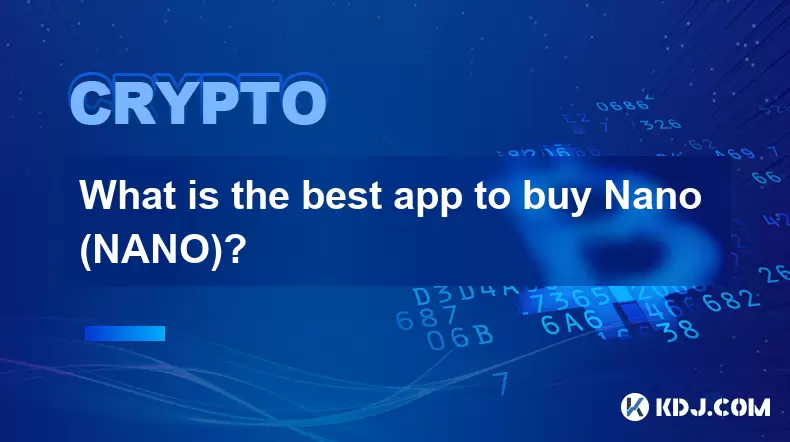
What is the best app to buy Nano (NANO)?
Aug 09,2025 at 03:35am
Understanding Nano (NANO) and Its Unique FeaturesNano is a feeless, instant cryptocurrency designed for fast peer-to-peer transactions. Unlike many ot...
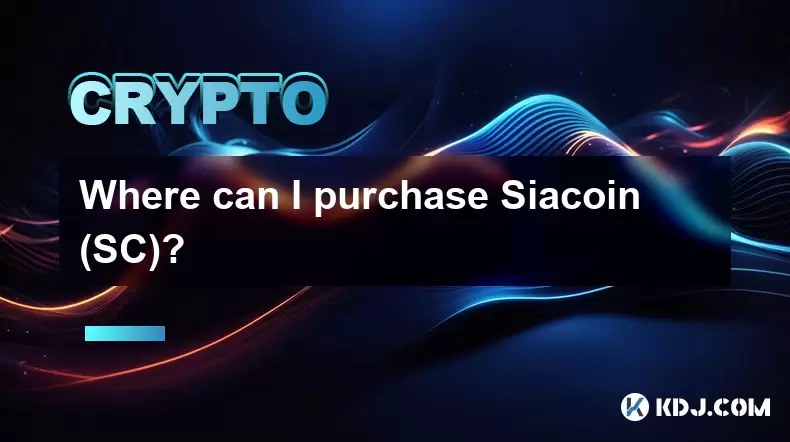
Where can I purchase Siacoin (SC)?
Aug 08,2025 at 11:14am
Understanding Siacoin (SC) and Its Role in the Sia NetworkSiacoin (SC) is the native cryptocurrency of the Sia decentralized cloud storage platform, a...
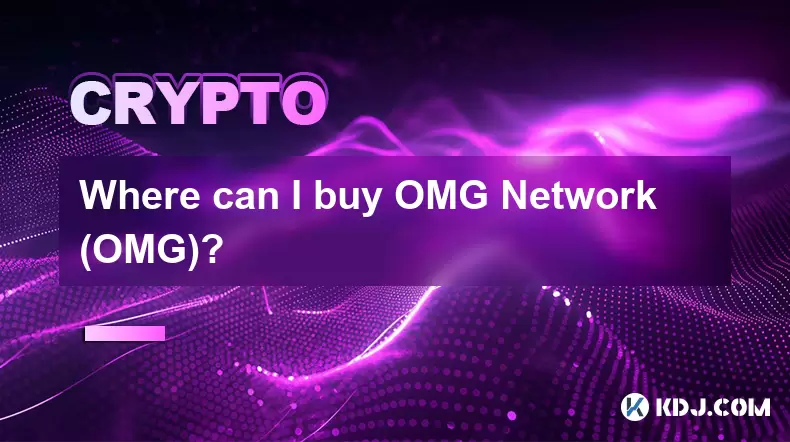
Where can I buy OMG Network (OMG)?
Aug 08,2025 at 12:57pm
Understanding OMG Network (OMG) and Its PurposeThe OMG Network, originally known as OmiseGO, is a layer-2 scaling solution built on the Ethereum block...
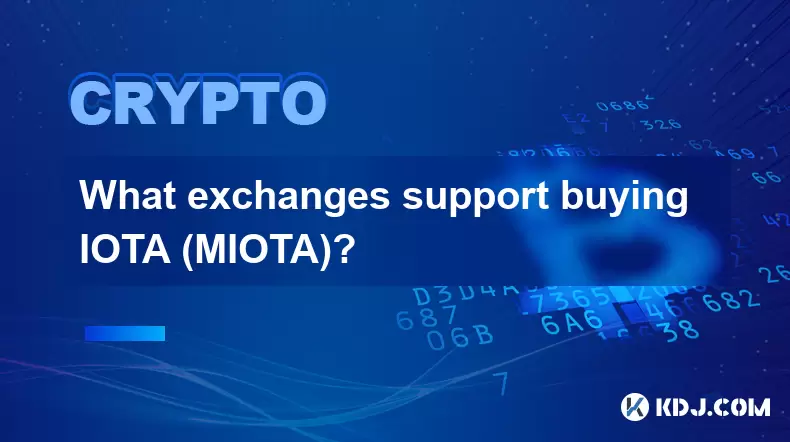
What exchanges support buying IOTA (MIOTA)?
Aug 07,2025 at 09:58pm
Understanding the Role of Private Keys in Cryptocurrency SecurityIn the world of cryptocurrency, private keys are the cornerstone of ownership and con...

Where can I buy UMA (UMA)?
Aug 07,2025 at 06:42pm
Understanding UMA and Its Role in Decentralized FinanceUMA (Universal Market Access) is an Ethereum-based decentralized finance (DeFi) protocol design...

How to buy Storj (STORJ) tokens?
Aug 09,2025 at 07:28am
Understanding Storj (STORJ) and Its Role in Decentralized StorageStorj is a decentralized cloud storage platform that leverages blockchain technology ...

What is the best app to buy Nano (NANO)?
Aug 09,2025 at 03:35am
Understanding Nano (NANO) and Its Unique FeaturesNano is a feeless, instant cryptocurrency designed for fast peer-to-peer transactions. Unlike many ot...

Where can I purchase Siacoin (SC)?
Aug 08,2025 at 11:14am
Understanding Siacoin (SC) and Its Role in the Sia NetworkSiacoin (SC) is the native cryptocurrency of the Sia decentralized cloud storage platform, a...

Where can I buy OMG Network (OMG)?
Aug 08,2025 at 12:57pm
Understanding OMG Network (OMG) and Its PurposeThe OMG Network, originally known as OmiseGO, is a layer-2 scaling solution built on the Ethereum block...

What exchanges support buying IOTA (MIOTA)?
Aug 07,2025 at 09:58pm
Understanding the Role of Private Keys in Cryptocurrency SecurityIn the world of cryptocurrency, private keys are the cornerstone of ownership and con...
See all articles

























































































